What does “NO STATIONS” mean on Kenwood KDC-BT710HD Car Receiver?
- RRobin WilliamsAug 19, 2025
If your Kenwood Car Receiver displays “NO STATIONS”, no stations were found.

What does “NO STATIONS” mean on Kenwood KDC-BT710HD Car Receiver?
If your Kenwood Car Receiver displays “NO STATIONS”, no stations were found.
What does “DEVICE FULL” mean on Kenwood Car Receiver?
If your Kenwood Car Receiver displays “DEVICE FULL”, the number of registered devices has reached its limit. Retry after deleting an unnecessary device.
What does “MEMORY FULL” mean on Kenwood KDC-BT710HD Car Receiver?
If your Kenwood Car Receiver displays “MEMORY FULL”, the tag memory of HD Radio receiver and SiriusXM Vehicle Tuner is full.
What does “iPod FULL” mean on Kenwood Car Receiver?
If your Kenwood Car Receiver displays “iPod FULL”, the connected iPod/iPhone memory is full.
What does “NO TAG FNC” mean on Kenwood Car Receiver?
If your Kenwood Car Receiver displays “NO TAG FNC”, the connected iPod does not support iTunes tagging function.
What does “TAG ERROR” mean on Kenwood Car Receiver?
If your Kenwood Car Receiver displays “TAG ERROR”, the unit is unable to complete transferring the tagged information to the iPod.
What does “CANNOT CREATE” mean on Kenwood KDC-BT710HD?
If your Kenwood Car Receiver displays “CANNOT CREATE”, custom station name creation was unsuccessful.
What does “CANNOT SAVE” mean on Kenwood Car Receiver?
If your Kenwood Car Receiver displays “CANNOT SAVE”, addition to the favorite category failed.
What does “NOT CONNECTED” mean on Kenwood Car Receiver?
If your Kenwood Car Receiver displays “NOT CONNECTED”, link to the application is impossible.
How to fix echo or noise occurs on Kenwood Car Receiver?
If you are experiencing echo or noise with your Kenwood Car Receiver, adjust the microphone unit’s position and check the [ECHO CANCEL] setting.
| Brand | Kenwood |
|---|---|
| Model | KDC-BT710HD |
| Category | Car Receiver |
| Language | English |
Safety advice for operating the unit while driving.
Advice on adjusting volume and general usage guidelines.
Precautions for remote control and cleaning instructions.
Guidelines for handling and cleaning discs.
Explanation of manual conventions and symbols used.
Diagram and description of the unit's front panel controls.
Diagram and description of the remote control.
Procedures for resetting the unit and replacing the remote battery.
How to disable the product demonstration mode.
Steps to set the current time on the unit.
Configuration of basic unit settings and features.
How to begin playback from CD, USB, or iPod sources.
Functions for pausing, skipping, rewinding, repeating, and random playback.
Instructions for connecting USB and iPod/iPhone devices.
How to select control mode for iPod/iPhone.
How to select tracks or files from a list or by name.
Using the remote for direct track or file searching.
Setting the ratio for skipping files during searches.
Choosing the desired drive on a connected USB device.
How to find and tune into HD Radio stations.
Selecting and listening to HD Radio multicast channels.
Tuning stations using direct access codes on the remote.
Adjusting tuner preferences like IF Band, Memory, Clock, and Time Sync.
How to tag songs from HD Radio broadcasts for iTunes purchase.
Moving tagged song data from the unit to your iPod/iPhone.
Setting up the unit for AUX input and connecting devices.
Customizing the name for the AUX input source.
Steps to prepare your device and account for Pandora.
How to connect and start listening to Pandora.
Controlling playback, creating/saving stations, and searching.
Steps to prepare your device and account for iHeartRadio.
How to connect and start listening to iHeartRadio.
Controlling playback, creating/saving stations, and searching.
Connecting the tuner and activating the subscription.
How to select channels and tune stations.
Tuning stations using direct access codes on the remote.
Using the replay feature for live broadcasts.
Using and managing stored favorite SiriusXM channels.
Tagging songs for purchase and transferring them to iPod/iPhone.
Configuring various settings for the SiriusXM service.
Managing channel locks and passcodes for SiriusXM.
Checking signal strength and replay buffer status.
Resetting SiriusXM settings to default.
How to connect and position the external microphone.
List of Bluetooth profiles supported by the unit.
Step-by-step guide to connect and pair a Bluetooth device.
Checking the connectivity and compatibility of Bluetooth profiles.
Receiving, rejecting, ending calls, and switching modes.
Setting the volume level for phone calls.
Using voice commands for phone control and intelligent assistants.
Improving call sound quality with microphone gain and noise reduction.
Receiving notifications for incoming text messages.
Using voice commands for phone control and checking status.
Configuring auto-answer, ring tone, and SMS notifications.
Accessing call logs and phone contacts.
Dialing numbers directly or searching for contacts by name.
Removing contacts from the unit's memory.
Selecting devices, audio, and priority connections.
Manually transferring phonebooks and changing PIN codes.
Reconnecting, auto-pairing, and initializing Bluetooth settings.
Listening to Pandora and iHeartRadio via Bluetooth.
Controlling playback of audio from Bluetooth devices.
Selecting preset or custom equalizer settings for music genres.
Adjusting bass boost, loudness, and subwoofer settings.
Adjusting speaker balance, fader, and tone controls.
Adjusting source volume offsets and audio reconstruction.
Customizing display color, dimmer, and brightness levels.
Controlling automatic or single-scroll display of text information.
Details on playable files, discs, USB, KENWOOD software, and iPod compatibility.
Notes on Pandora service and PC application support.
Details on HD Radio, iHeartRadio, and Bluetooth technologies.
Solutions for no sound, poor reception, and static noise.
Remedies for unit errors, disc read issues, and ejection problems.
Addressing memory full, tagging, and file not found errors.
Solutions for common Pandora app and connection errors.
Remedies for iHeartRadio station selection and connectivity issues.
Troubleshooting SiriusXM tuner, antenna, and channel availability.
Resolving signal, subscription, and code errors for SiriusXM.
Solutions for pairing, device, and connection problems.
Addressing interrupted audio, call quality, and voice recognition errors.
Instructions for installing the unit into the dashboard.
Alternative mounting method without using the sleeve.
Procedure for safely detaching the unit from the car.
Visual guide for connecting the unit's wires to the car system.
List of components included for installing the unit.
Technical details for FM and AM radio reception.
Technical details for the CD playback mechanism and filtering.
Details on supported audio file formats and decoding capabilities.
Information on USB standards, file systems, and power requirements.
Details on Bluetooth version, range, profiles, and power.
Specifications for maximum output power, speaker impedance, tone, and preout levels.
Details on voltage, impedance, and frequency response for auxiliary input.
Operating voltage, current, temperature, size, and weight of the unit.
Warnings regarding controls, adjustments, and laser product safety.
Information on radio frequency energy, interference, and compliance limits.
Guidelines for recycling electronic equipment and batteries.
Notices regarding Industry Canada RSS standards and RF exposure.
Information on radiation exposure limits and installation recommendations.
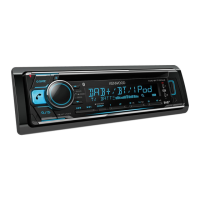
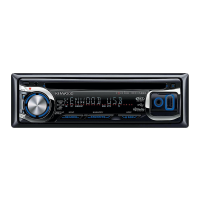
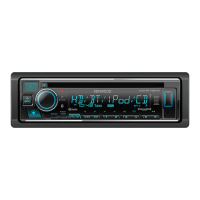
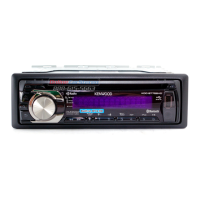
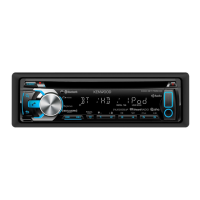

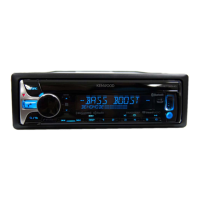




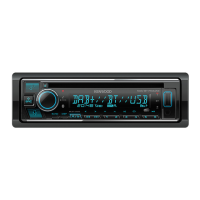
